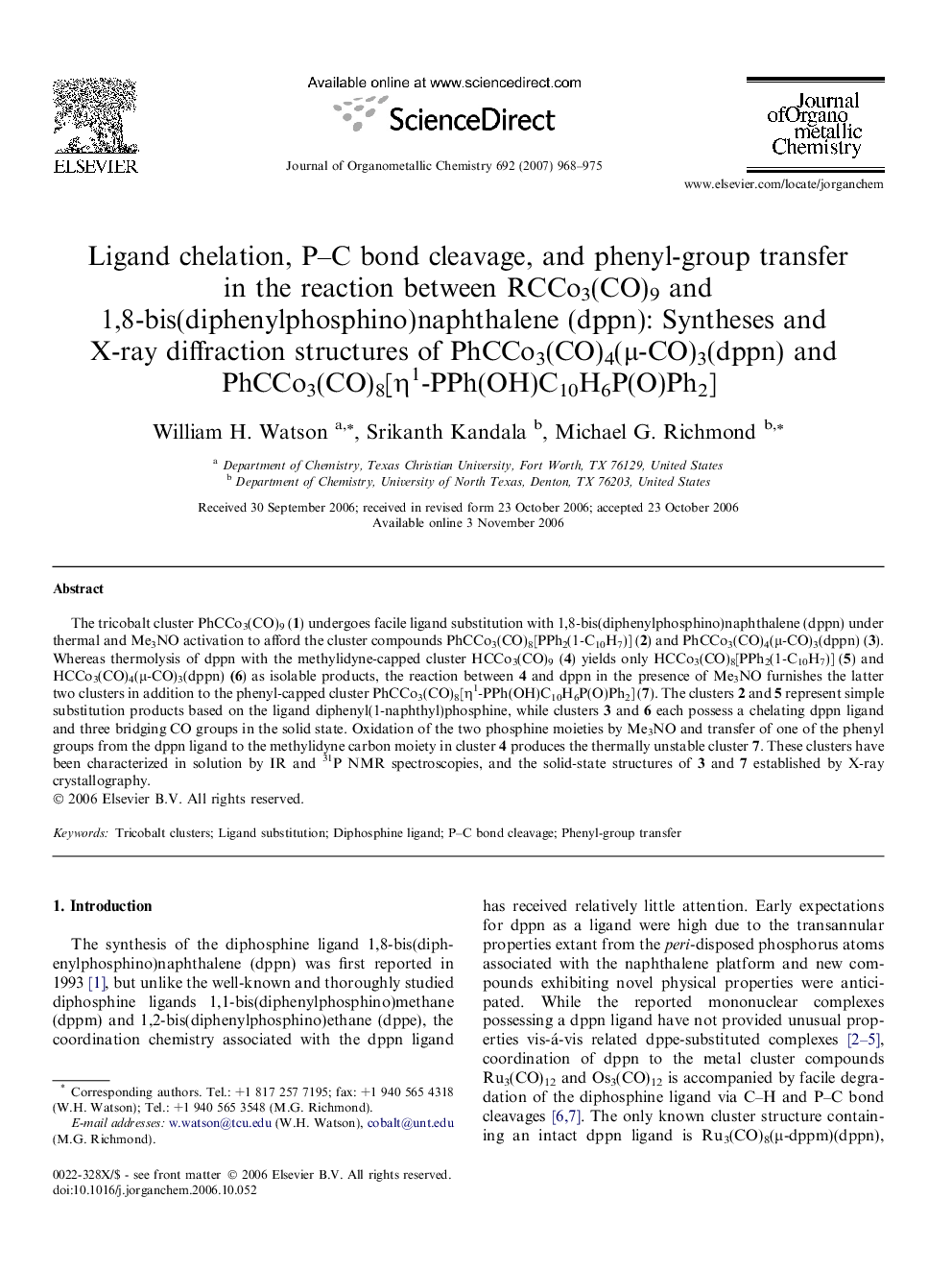| Article ID | Journal | Published Year | Pages | File Type |
|---|---|---|---|---|
| 1323465 | Journal of Organometallic Chemistry | 2007 | 8 Pages |
The tricobalt cluster PhCCo3(CO)9 (1) undergoes facile ligand substitution with 1,8-bis(diphenylphosphino)naphthalene (dppn) under thermal and Me3NO activation to afford the cluster compounds PhCCo3(CO)8[PPh2(1-C10H7)] (2) and PhCCo3(CO)4(μ-CO)3(dppn) (3). Whereas thermolysis of dppn with the methylidyne-capped cluster HCCo3(CO)9 (4) yields only HCCo3(CO)8[PPh2(1-C10H7)] (5) and HCCo3(CO)4(μ-CO)3(dppn) (6) as isolable products, the reaction between 4 and dppn in the presence of Me3NO furnishes the latter two clusters in addition to the phenyl-capped cluster PhCCo3(CO)8[η1-PPh(OH)C10H6P(O)Ph2] (7). The clusters 2 and 5 represent simple substitution products based on the ligand diphenyl(1-naphthyl)phosphine, while clusters 3 and 6 each possess a chelating dppn ligand and three bridging CO groups in the solid state. Oxidation of the two phosphine moieties by Me3NO and transfer of one of the phenyl groups from the dppn ligand to the methylidyne carbon moiety in cluster 4 produces the thermally unstable cluster 7. These clusters have been characterized in solution by IR and 31P NMR spectroscopies, and the solid-state structures of 3 and 7 established by X-ray crystallography.
Graphical abstractThe tricobalt cluster PhCCo3(CO)9 (1) reacts with 1,8-bis(diphenylphosphino)naphthalene (dppn) to give PhCCo3(CO)8[PPh2(1-C10H7)] (2) and PhCCo3(CO)4(μ-CO)3(dppn) (3). Similar reactions using the methylidyne-capped cluster HCCo3(CO)9 (4) afford the corresponding products HCCo3(CO)8[PPh2(1-C10H7)] (5) and HCCo3(CO)4(μ-CO)3(dppn) (6), in addition to the phenyl-capped cluster PhCCo3(CO)8[η1-PPh(OH)C10H6P(O)Ph2] (7). The chelation of the dppn ligand to a single cobalt atom in 3 and the formal transfer of a phenyl group from the dppn ligand to the methylidyne moiety in cluster 4 to ultimately produce 7 have been established by X-ray crystallography.Figure optionsDownload full-size imageDownload as PowerPoint slide
